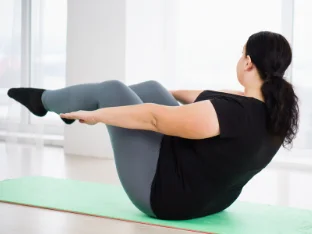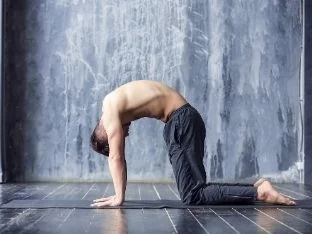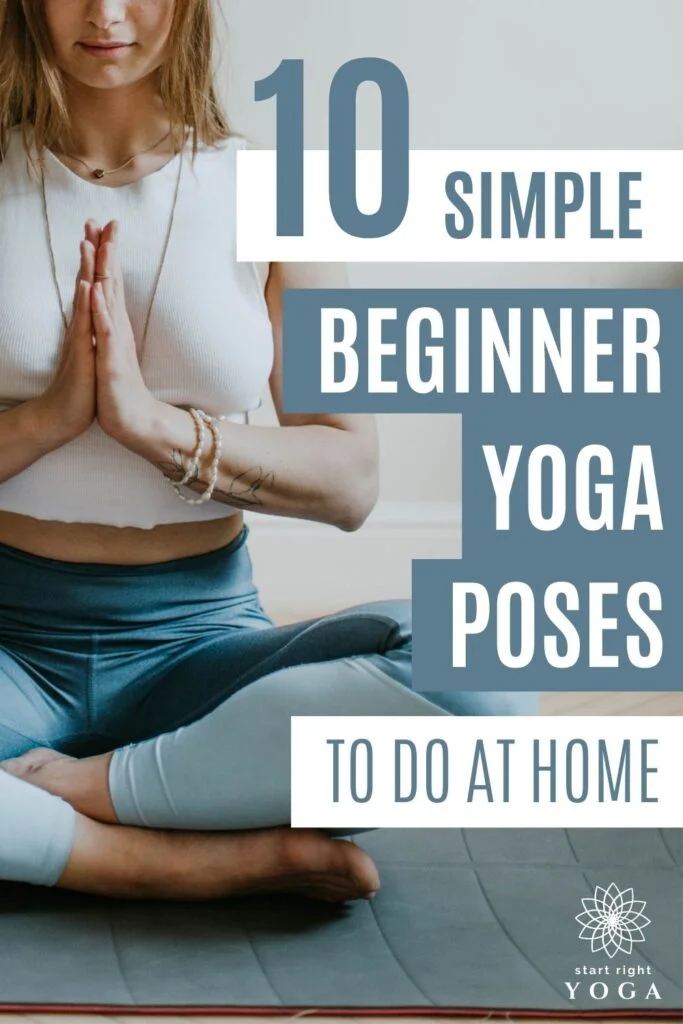
If you are wondering how to begin yoga, here are 10 great yoga poses for beginners to help get you started from the comfort of your home.
We’ve put these top 10 yoga poses for beginners into a quick 12-minute yoga routine for beginners complete in a free pdf printable.
The simple yoga poses used in this 12-minute yoga routine will help strengthen, stretch and calm your entire body.
Yoga is a wonderful practice that can be used for many different benefits, from improving your physical health to relieving stress and increasing core strength.
What’s the best type of yoga for beginners?
Hatha yoga is an ideal type of yoga for beginners to start with as it considered one of the gentler forms of yoga and focuses on holding the poses rather than moving quickly between asanas (poses).
This gives you a chance to learn and “master” each pose to build confidence and good form.
The yoga poses for beginners that we have selected today are ideal starting yoga poses if you’ve never done yoga before.
They build the foundations of many other yoga poses.
Master these 10 yoga poses for beginners and you will be able to enjoy yoga to its fullest.
Is yoga difficult for beginners?
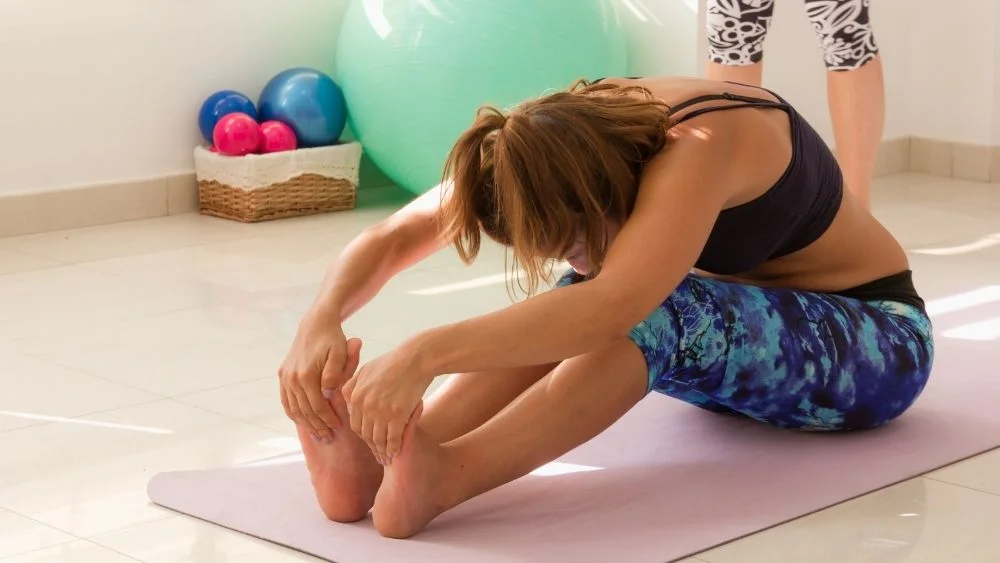
Yoga can be scary, especially if you haven’t done it before. But actually, you may have done some yoga at the end of a fitness class or when you were a child.
That’s because there are a lot of poses that are commonly used in other areas of fitness and sport as you may come to find out through practice.
For example, plank pose, and dolphin pose are common core strengthening exercises used in mainstream exercise regimes, you may know them as plank and high plank.
There’s also a lot of stretches that are commonly used such as reclined pigeon pose, seated forward bend and bound angle. These are all common stretches used in many sporting and fitness settings.
So, to answer the question is yoga difficult for beginners the answer is, no, it’s not difficult.
Especially if you start with a gentler form such as hatha yoga. Start at your own pace and build from there.
Over time you will get more flexible, stronger and confident to tackle the more challenging poses.
How much yoga should a beginner do?
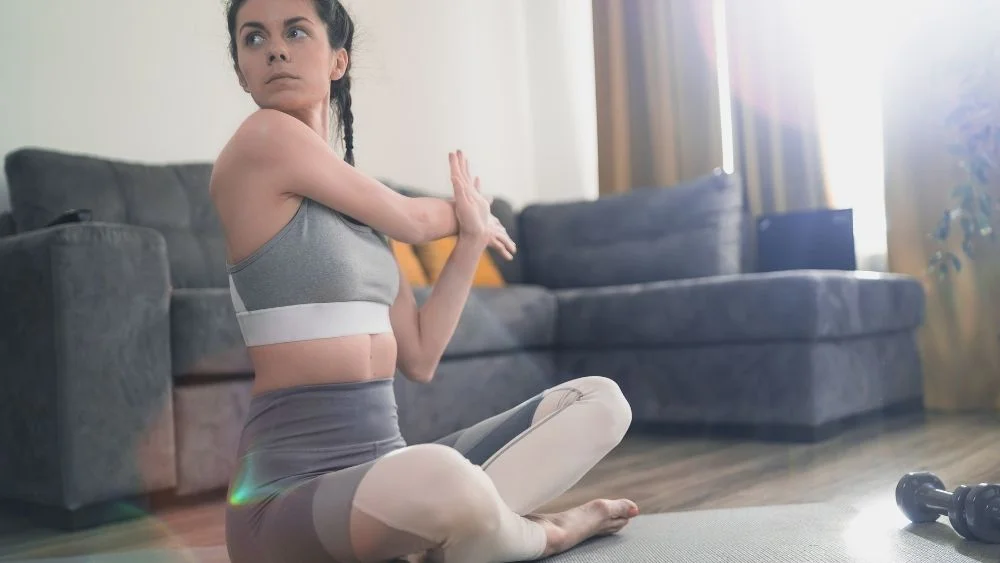
Yoga covers all the basics from strength to meditation to stretching and flexibility.
You could do yoga every day if you wanted to. There is no harm in it.
It’s very common for people to do yoga every day as it becomes a way of life and not just a form of exercise.
What is the best yoga routine for beginners?
The best yoga routine for beginners is one that you can comfortably do without harming yourself and come out at the end feeling good.
Yoga is traditionally performed and measured through breath counts, for beginners you may want to start with a timed yoga routine so that you can take your time and focus on breathing to practice each pose.
Poses can be held from anywhere between 30-120 seconds as you get comfortable in each pose, get to connect with your body and be aware of your surroundings.
We recommend starting with putting these 10 yoga poses for beginners together as short yoga routine by doing each pose for 60 seconds for a short 10-minute routine.
We have even put tother a nice 12-minute beginners yoga routine PDF for you at the end of this post.
10 Best Yoga Poses For Beginners
So, without further ado let’s start with these 10 basic yoga poses and get you started practicing yoga!
1. Mountain pose
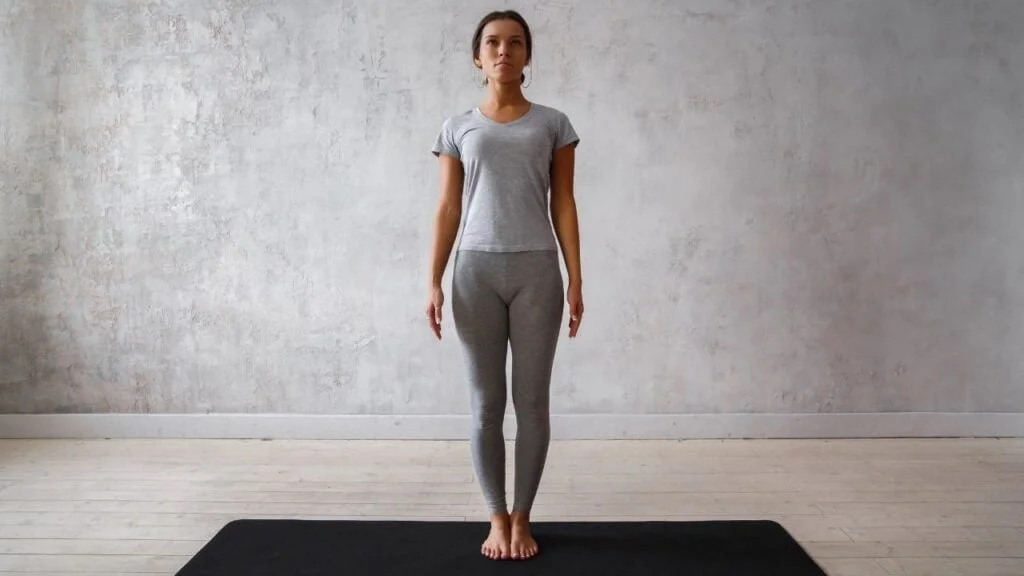
Mountain pose helps create awareness of our body from strength balance and stability. It’s a great starting position to master.
Stand up with feet together, toes touching and heels slightly apart.
Stand tall with soft knees, focus on your calf, quads, hamstrings and glute muscles.
Keep your spine strong by engaging your abs and lower back muscles to help maintain good posture.
Lift your chest, tuck your chin in slightly, pull your shoulders up and back with your arms by your side.
You can turn your palms in our out.
2. Plank Pose
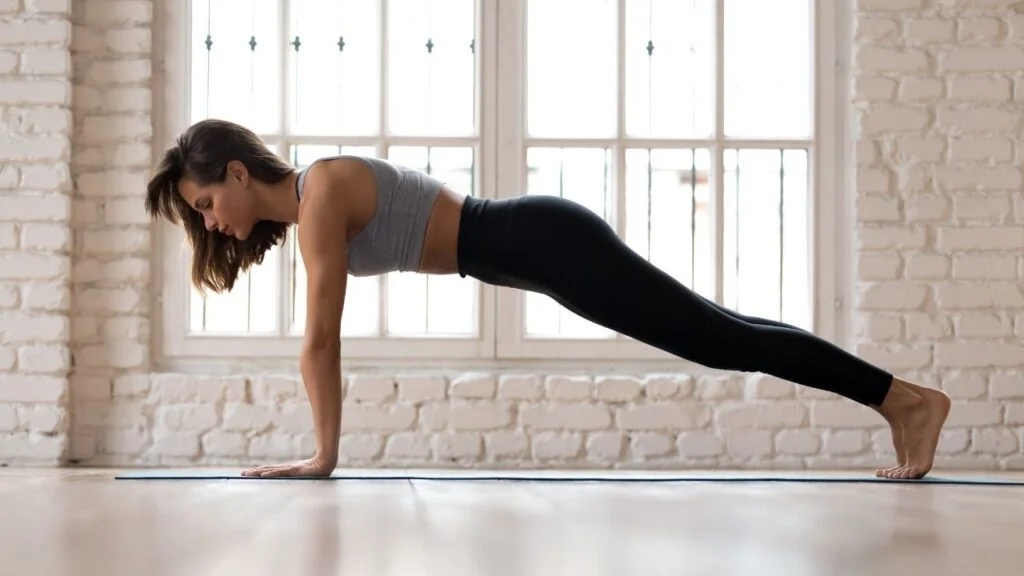
Plank pose will help to strengthen your core muscles and arms.
To do plank pose lay your mat, place your hands by your sides and press up into tabletop pose.
Tuck your toes under and straighten your legs lifting your body into plank pose.
Maintain a flat back maintaining a strong position with your gaze down between your hands.
Keep your shoulders over your wrists and body parallel to the ground.
Hold in position.
3. Downward facing dog
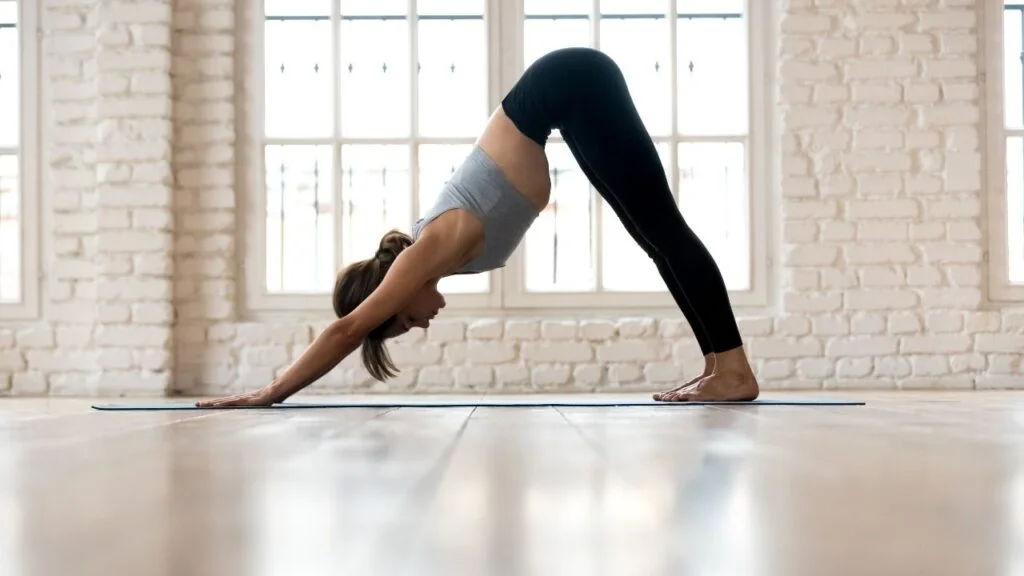
Downward facing dog is a pose that helps to compress your spine whilst stretching your upper back and back of your legs.
Begin face down on your matt. Place your hands beside your chest on the floor.
Press up onto all fours into tabletop pose. Next, tuck your toes under and lift your hips up high towards the sky.
Straighten your legs and lift your hips as high as you can. Try to reach your heels down but if you can’t that’s perfectly fine.
Press your weight into your hands, keeping your back as flat as you can extending strongly through your arms.
Modifications – you can use yoga blocks or a small step to place your hands on if you struggle to get into position.
4. Sphinx Pose
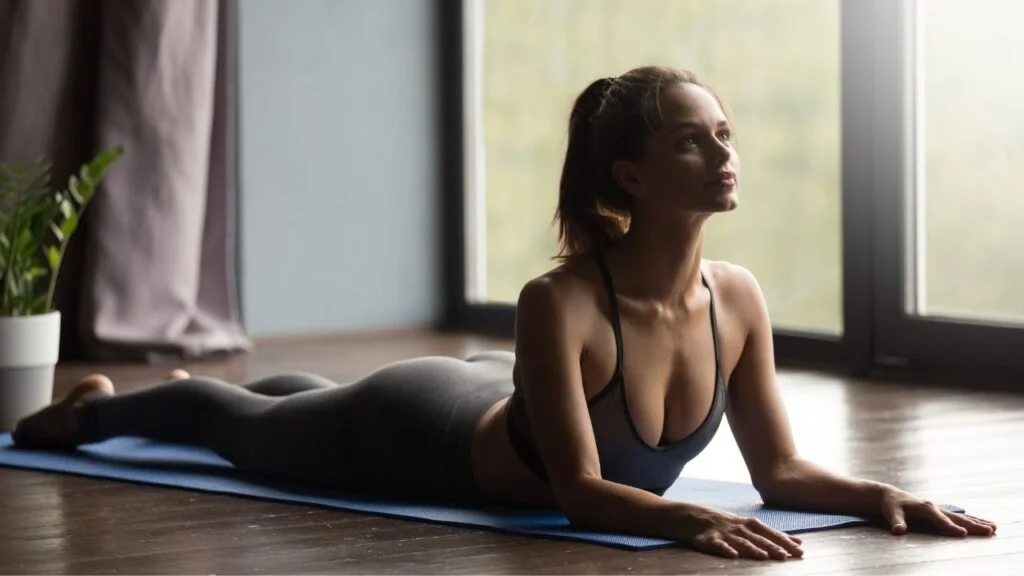
Sphinx pose is a great beginner’s backbend pose that strengthens your spine, stretches your chest, shoulders and abs while firming up your butt.
To do Sphinx pose Lay on your mat, belly down and bring your arms forwards.
Bring your shoulders over your elbows, pressing your hands into the ground.
From here lift your chest up and press your navel down into the floor. Squeeze your glutes and hold in position.
5. Warrior 1 Pose
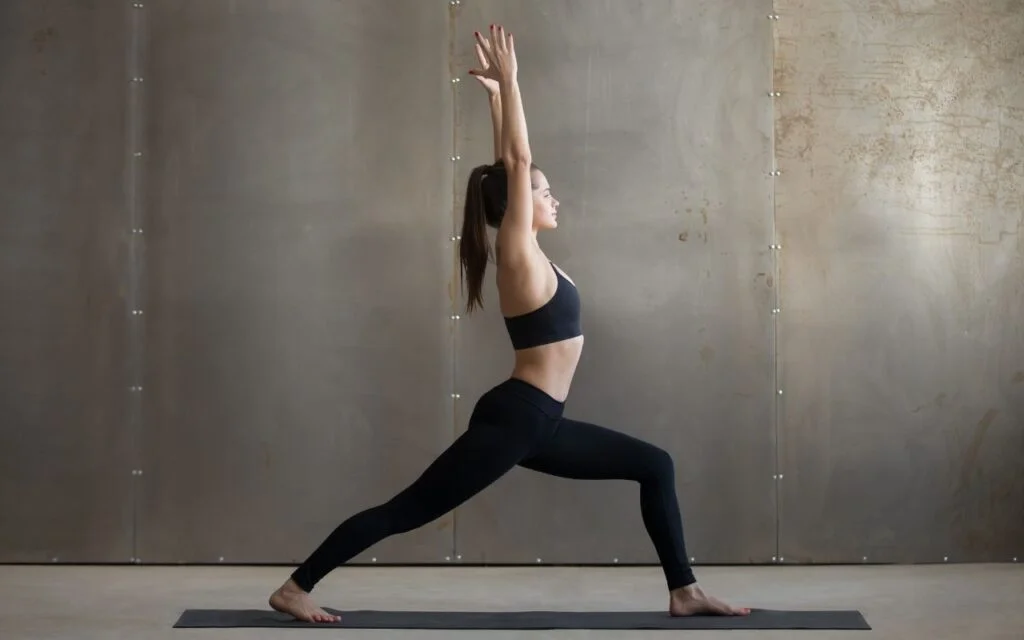
Warrior pose is a popular pose with many yogis, and it looks fun also.
It stretches your chest, neck, abs and inner thigh muscles whilst strengthening your leg muscles, shoulder muscles and lower back.
To do warrior 1 stand in the centre of your yoga mat and take a wide stance.
Rotate your right foot so that it points towards an end of your mat, rotate your hips and bring your left foot in slightly but not fully forwards.
With your body facing the same direction as your right foot, take your body weight forward slightly so that your right knee is directly over your right ankle.
You may feel a slight stretch in your groin, if you don’t, take a wider stance. Your back leg should be nice and straight.
Take your arms up and out above your head with your palms facing inwards towards each other but not totally together.
Hold in position.
To swap sides return to your centred wide stance and repeat with your left leg leading the way.
6. Seated Forward Bend Pose
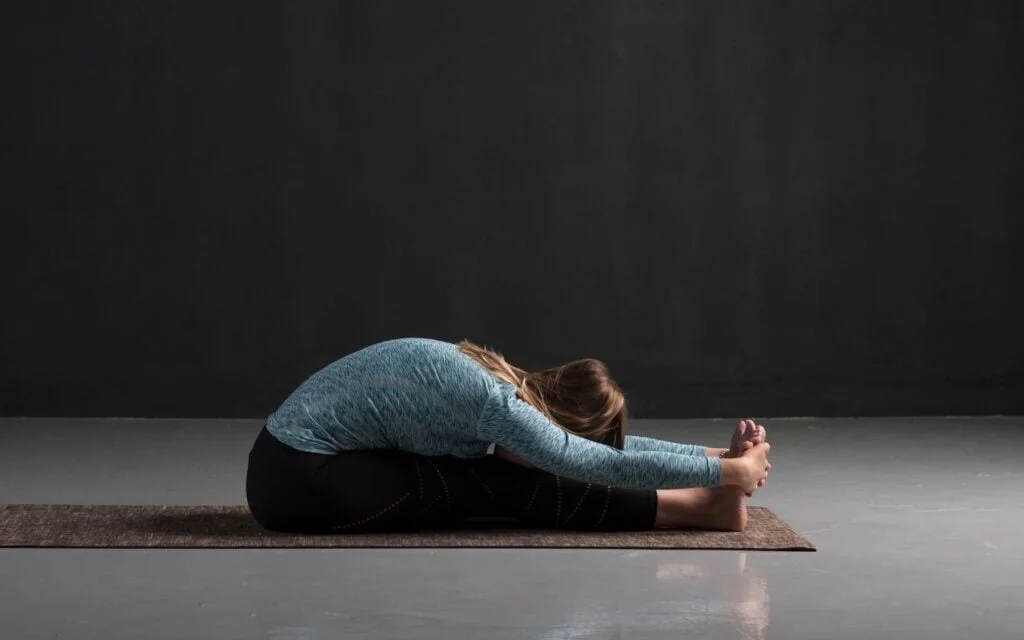
Seated forward bend will help stretch and lengthen your hamstrings whilst also lengthening your spine.
To do seated forward bend pose sit with your legs out straight. With your feet flexed.
Inhale and take your arms up over your head, exhale and lean forwards taking your hands towards our feet as you lower your body to your thighs.
If you are unable to reach your feet place them on your feet or thighs as far as you comfortably can.
7. Bridge pose
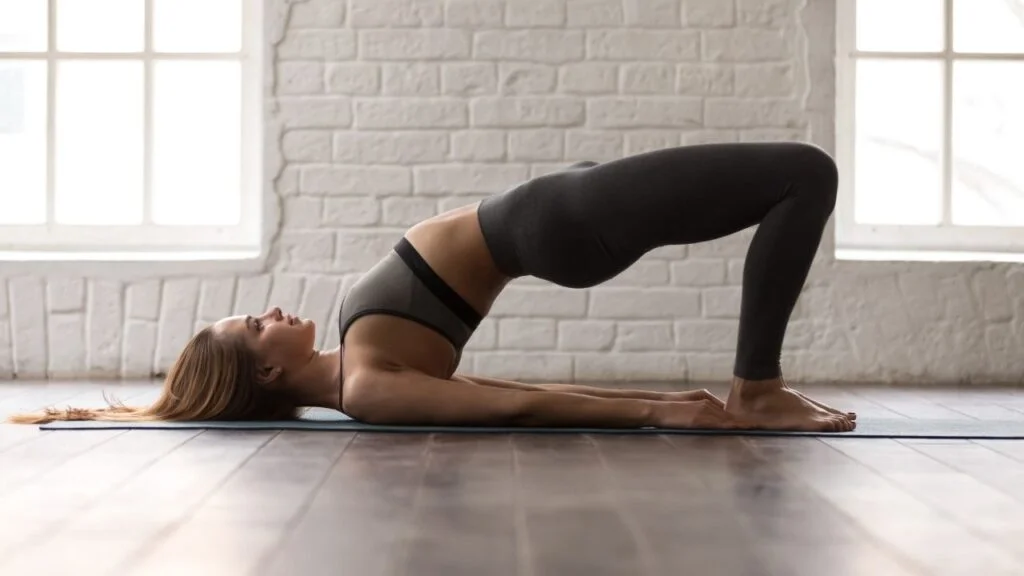
Bridge pose is another backbend pose that will help tighten your booty.
It’s an amazingly simple pose that’s great for beginners and one you may have already done.
To do bridge pose lay on your back with your feet hip-width apart close to your but.
If you can touch your heels with your fingertips you are in the correct position. Lift your hips up towards the sky as high as you can balancing on your shoulders.
You can leave your hands on the mat palms facing down into the mat or interlock them under your body.
Hold yourself here in position.
8. Bound Angle Pose
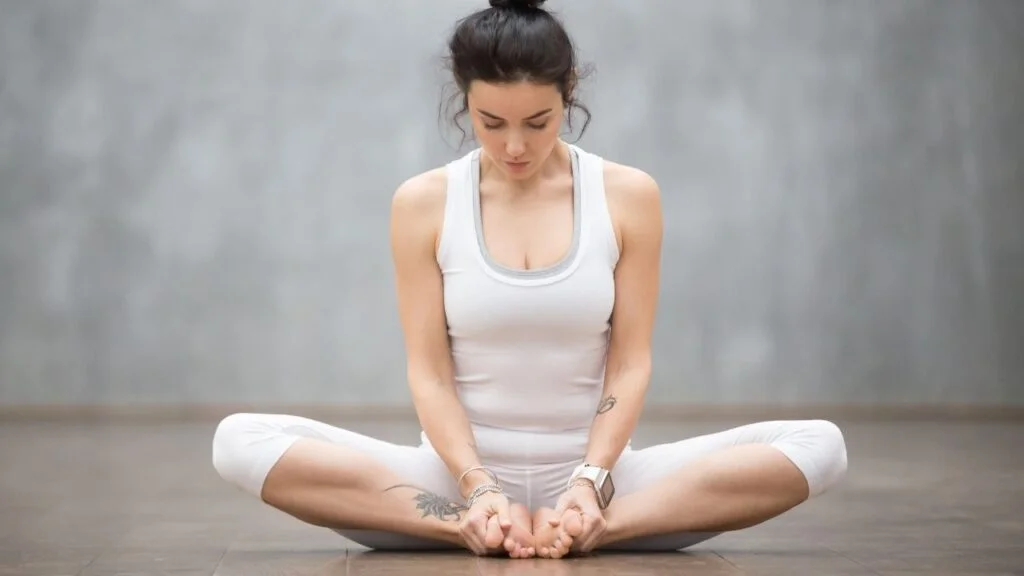
Bound angle will stretch your inner thighs deeply.
Start by sitting on your yoga mat, you may wish to sit on a pillow or rolled towel.
Bring your feet in so that your soles are together, bring your heels in close to your body and let your thighs fall gently.
Take hold of your big toe and sit up tall.
Let gravity do the work and don’t press down on your thighs.
Sit in position.
9. Extended Childs pose
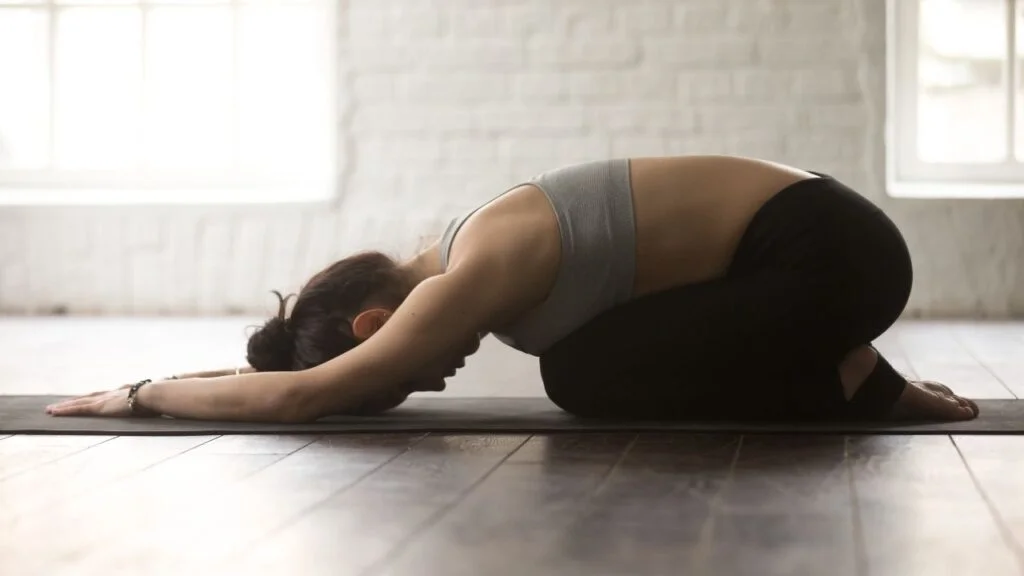
Extended child’s pose is a beautiful yoga pose that’s ideal for beginners. It will help stretch your spine and sides while opening your shoulders.
To do extended child’s pose come into tabletop position, that’s on all fours with hands under shoulders and knees under hips.
Take your big toes and place them together.
Now shift your weight back and gently sit you into your feet. You can take your knees wider if it’s more comfortable.
Inhale reach your hands forwards, as you exhale let your body fall to the floor, place your head down to the floor. And relax.
10. Cat cow pose
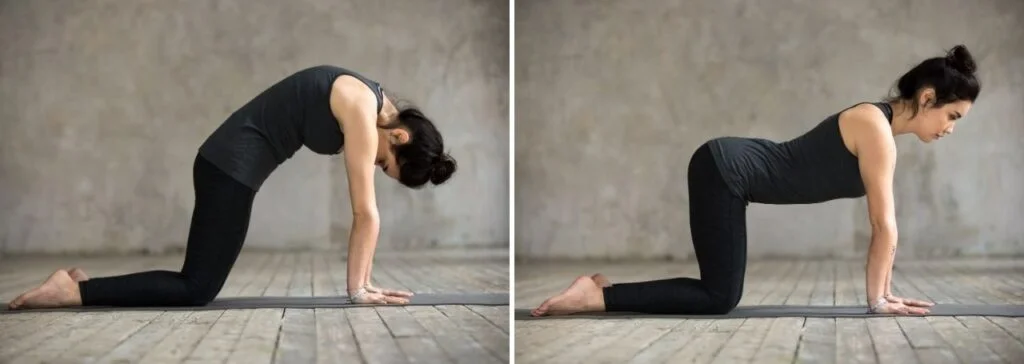
Cat cow pose is a combination of two poses, cat and cow and will help to increase flexibility in your spine. It also helps to open the chest and abdominal region.
If you have any stiffness in your lower back, you will appreciate this pose.
To do cat cow start in tabletop pose. Wrists under your shoulders and knees directly under your hips, take your shoulders away from your ears and look down between your fingers.
Inhale and tilt tailbone up, drop your belly down towards the ground and lift your head up.
Exhale and do the opposite, tuck your tailbone under and round your back. Take your navel in and pull your spine up to the ceiling.
Hold each position for one breath or around 5-10 seconds and keep switching between each posture.
There you have it, 10 yoga poses for beginners that will help you get started practicing yoga at home. If you wanted these yoga poses in a workout routine, you can download our 12-minute beginner’s yoga routine PDF below.
12-Minute Beginners Yoga Workout PDF
Do these 10 beginner yoga poses in our quick 12-minute workout, download the PDF by clicking the button below.
More yoga posts
Unwind with Yoga for Stress Relief – Find Serenity
8 Beginner Yoga Poses For Plus-Sized Women
10 Major Benefits Of Yoga For Men

Welcome! I’m Luke, a certified personal trainer with over 14 years of experience. With a BSc (Hons) in Sports Science, I specialize in tailored fitness programs for diverse clients who want to improve their lifestyle through exercise and healthy eating.








